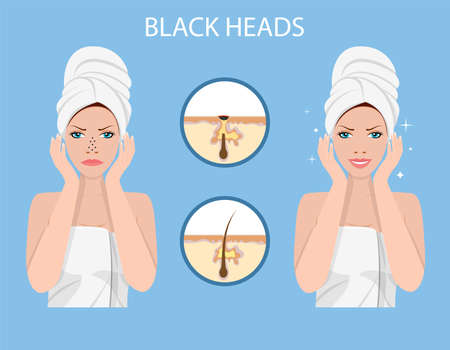Understanding Sensitive Skin Across Ethnicities
Sensitive skin is a common concern in the UK’s richly diverse population, but how it manifests can vary significantly across different ethnic backgrounds. These variations are shaped by a complex interplay of genetic, environmental, and cultural factors. For example, individuals with lighter skin tones may experience visible redness and flushing more readily due to a thinner stratum corneum and lower melanin content. In contrast, those with darker skin tones might be more prone to post-inflammatory hyperpigmentation or experience sensitivity as itching and stinging without obvious redness. Genetic predispositions—such as differences in the skin barrier function and natural oil production—play an important role in these distinctions. Environmental influences like the UK’s variable climate, air pollution in urban centres, and common allergens also contribute to skin reactivity, while lifestyle habits, traditional skincare routines, and dietary preferences rooted in cultural heritage further influence how sensitive skin presents and how it is managed. Understanding these nuances is crucial for both individuals and practitioners when tailoring effective skincare regimens and treatments that respect the unique needs of every ethnicity within the British context.
Common Triggers and Skin Concerns
Understanding the triggers and concerns associated with sensitive skin in diverse ethnicities is crucial for effective skincare customisation, especially within the UK’s unique environment. Ethnic diversity brings a spectrum of skin characteristics, each with distinct sensitivities to external factors. In the UK, climatic conditions such as cold winds, frequent rainfall, and fluctuating temperatures can exacerbate skin reactivity across all populations. Additionally, urban pollution levels—especially in cities like London and Manchester—contribute significantly to skin irritation, with particulate matter and exhaust fumes being common culprits.
Typical Irritants in the UK Environment
| Irritant | Description | Affected Ethnicities |
|---|---|---|
| Cold Weather | Reduces skin barrier function, leading to dryness and sensitivity | All ethnic groups, but especially those with darker phototypes prone to ashy appearance |
| Air Pollution | Particulate matter and NO2 exposure aggravate inflammation and pigmentation issues | Greater pigmentation changes in South Asian, Black, and Middle Eastern populations |
| Hard Water | High mineral content can disrupt natural skin pH and cause irritation | Individuals with naturally drier or thinner skin types (e.g., East Asian and Caucasian) |
| Lifestyle Habits (e.g., central heating, hot showers) | Strips natural oils from the skin, increasing sensitivity | All groups; exacerbated in those with pre-existing dry or eczema-prone skin |
| Cultural Skincare Practices | Certain traditional remedies may not suit the UK’s climate or water quality, causing unexpected reactions | Diverse ethnic groups adapting rituals from their country of origin to the UK context |
Main Skin Concerns Across Ethnicities in the UK
- Hyperpigmentation: More common in individuals of African, South Asian, or Middle Eastern descent when exposed to pollutants or post-inflammatory responses.
- Erythema (Redness): Predominantly seen in lighter phototypes (Caucasian or East Asian), heightened by harsh winds and low humidity.
- Sensitivity to Fragrances & Preservatives: Cosmetic formulations popular in the UK may contain allergens that disproportionately affect sensitive skin among all ethnic backgrounds.
- Eczema & Atopic Dermatitis: Increased prevalence among children of African-Caribbean descent in urban environments due to environmental stressors.
- Acneiform Reactions: May be triggered by occlusive products or pollution, particularly in young adults adapting to new climates after migration.
The Impact of Urban Living on Sensitive Skin
The fast-paced lifestyle common in major UK cities often leads to increased stress levels and irregular sleep patterns. These factors can further compromise the skin’s barrier function, making it more susceptible to adverse reactions. For individuals of diverse backgrounds who may already have a genetic predisposition to sensitivity or specific dermatological conditions, these triggers are amplified by environmental and lifestyle influences unique to the UK.

3. Tailoring Skincare Routines for Diverse Skin Types
Personalising daily skincare routines is essential when caring for sensitive skin across diverse ethnicities, as each skin type has unique characteristics and requirements. The British approach to skincare recognises not only the science but also the cultural nuances that influence product selection and application techniques. Understanding these differences allows individuals to create routines that are both effective and respectful of their heritage.
Product Selection: Ingredients Matter
Choosing the right products starts with a careful evaluation of ingredients suited to specific skin sensitivities common among various ethnic groups. For example, individuals with darker skin tones may be more prone to hyperpigmentation and should seek out gentle cleansers free from harsh surfactants, along with serums containing niacinamide or vitamin C to even skin tone. Those with fairer or Asian complexions might benefit from products fortified with ceramides and hyaluronic acid to reinforce the skin barrier. Avoiding fragrances, alcohol, and parabens is a universal guideline for sensitive skin, but it’s particularly crucial for those whose genetic backgrounds predispose them to allergic reactions.
Layering Techniques: Less Is More
The British tendency towards understated elegance extends to skincare layering. Overloading the skin with too many active ingredients can trigger irritation, especially in sensitive skin types. Start with a mild cleanser, followed by a hydrating toner or essence tailored to individual needs—such as rosewater for soothing or green tea for antioxidant benefits. Next, apply targeted treatments like serums or ampoules, ensuring they address specific concerns such as redness, dryness, or pigmentation. Finish with a lightweight moisturiser and broad-spectrum SPF, regardless of ethnicity, as sun protection is vital for all skin tones.
Cultural Sensitivity in Routine Design
Respecting one’s heritage means incorporating traditional remedies and preferences where appropriate. For example, British-African communities might include shea butter for its emollient properties, while South Asian individuals could benefit from turmeric-based formulations known for their calming effects. Consulting with dermatologists familiar with multi-ethnic skin is advisable to balance modern science with time-honoured practices.
Ultimately, customising skincare routines for diverse ethnicities requires attention to both scientific research and cultural context. By selecting suitable products and applying them thoughtfully, individuals can nurture sensitive skin effectively while honouring their unique background.
4. Professional Treatments: Cultural Considerations
When addressing sensitive skin across diverse ethnic backgrounds, it is vital that in-clinic procedures are tailored to respect the unique physiological characteristics of different skin types. In the UK, multicultural society demands that practitioners recognise and adapt their methods according to ethnic-specific concerns, particularly when performing advanced treatments such as chemical peels, microneedling, and laser therapies.
Chemical Peels: Ethnic-Specific Protocols
Chemical peels must be selected with caution for individuals with darker skin tones (Fitzpatrick Skin Types IV-VI), as these groups are more prone to post-inflammatory hyperpigmentation (PIH) and scarring. UK best practice recommends the use of milder acids (such as lactic or mandelic acid) and lower concentrations for sensitive skin among Asian, Black, and mixed-heritage patients. Pre-treatment priming with topical agents like hydroquinone or retinoids may also be considered to minimise risk.
Microneedling: Adjusting Depth and Frequency
Microneedling is generally safe for most ethnicities but requires a careful approach for those with sensitive skin. Practitioners in the UK often adjust needle depth and session frequency based on the patient’s skin type and ethnicity. For example, lighter depths are recommended for East Asian and South Asian individuals who may experience heightened sensitivity or erythema.
| Treatment Parameter | Caucasian Skin | Asian Skin | Black Skin |
|---|---|---|---|
| Peel Acid Type | Glycolic/Lactic | Mandelic/Lactic | Lactic/Mandelic |
| Microneedling Depth (mm) | 0.5–1.5 | 0.25–1.0 | 0.5–1.0 |
| Laser Wavelength | 532/1064 nm | 1064 nm only | 1064 nm only |
| Risk of PIH | Low to Moderate | Moderate to High | High |
Laser Therapies: Choosing Safe Modalities
The choice of laser technology is particularly crucial in the UK, where patients represent a broad spectrum of ethnic backgrounds. Longer wavelengths such as Nd:YAG 1064nm are preferred for darker phototypes due to their deeper penetration and reduced risk of pigmentary alterations. Patch testing is essential for all sensitive skin types, especially among ethnic minorities, to avoid adverse outcomes.
Practitioner Training and Cultural Competency
A culturally competent approach involves not only technical adaptation but also effective communication—explaining risks, expected outcomes, and aftercare in an accessible manner that considers language preferences and cultural sensitivities.
Summary Table: Key Adaptations by Ethnicity
| Ethnicity/Skin Type | Main Concern in Sensitive Skin | Recommended Adaptation (UK Best Practice) |
|---|---|---|
| Caucasian (Type I-III) | Erythema, irritation | Mild formulations, gradual escalation of treatment intensity |
| East/South Asian (Type III-V) | PIH, redness, sensitivity | Milder acids, reduced microneedling depth/frequency, longer-wavelength lasers only |
| African/Caribbean (Type V-VI) | Scarring, PIH, dryness | Lactic/mild peels, conservative energy settings, thorough hydration pre/post-procedure |
| Mixed Heritage (Varied) | Diverse presentations; unpredictable reactions | Pilot patch tests; highly individualised protocols; close follow-up care |
By integrating these cultural considerations into professional treatments for sensitive skin, clinics across the UK can deliver safer outcomes while respecting the diversity of their client base.
5. Education and Communication: Building Trust with Patients
Establishing a strong foundation of trust is fundamental when caring for patients with sensitive skin across diverse ethnicities. Culturally sensitive consultations begin by acknowledging and respecting each patient’s unique heritage, beliefs, and experiences regarding skin health. Practitioners must use inclusive language that avoids assumptions about lifestyle, skincare routines, or cultural preferences. For example, rather than using generic descriptors, healthcare professionals should ask open-ended questions such as, “Can you tell me about your usual skincare practices?” or “Are there any cultural traditions you follow when it comes to skin care?” This approach encourages honest dialogue and makes patients feel seen and understood.
Tailoring Patient Education Materials
Practical education should be tailored to reflect the varied needs of patients from different ethnic backgrounds. Written materials and verbal advice should consider language proficiency, literacy levels, and cultural nuances. For instance, educational leaflets could include visuals representing a range of skin tones and conditions relevant to specific ethnic groups. When discussing treatment plans or product recommendations, it’s crucial to explain the rationale behind each choice in clear, jargon-free language. Providing translations or multilingual resources where necessary can further empower patients to make informed decisions about their skin health.
Encouraging Two-Way Communication
Effective communication is a two-way process. Healthcare providers should actively listen to concerns, validate patient experiences with sensitivity, and encourage questions throughout the consultation. Creating an open atmosphere where patients feel comfortable sharing their worries—such as previous negative reactions or cultural stigmas attached to certain treatments—helps foster trust. Demonstrating empathy, patience, and cultural competence not only improves patient satisfaction but also enhances treatment outcomes for sensitive skin in diverse populations.
Building Long-Term Relationships
Ultimately, building trust through education and communication requires ongoing commitment. Follow-up appointments are opportunities to reassess progress, address new questions, and adjust recommendations as needed. By establishing themselves as supportive partners in each patient’s skincare journey—and maintaining a culturally aware approach—practitioners can deliver more personalised care that respects diversity and promotes optimal skin health for all.
6. Case Studies and Real-Life Practice
Customised Approaches for Sensitive Skin in the UK
Across the UK, clinicians increasingly encounter patients from a variety of ethnic backgrounds, each presenting unique skin sensitivities and concerns. Tailoring skincare and treatment plans is not just a matter of best practice—it is essential for achieving optimal outcomes in our multicultural society.
Case Study 1: Afro-Caribbean Patient with Atopic Dermatitis
A 35-year-old Afro-Caribbean woman presented at a London dermatology clinic with persistent facial redness and itching, aggravated by harsh winter weather. Standard emollients had offered little relief. A bespoke treatment plan was devised involving fragrance-free, ceramide-rich moisturisers and low-potency topical corticosteroids. Regular follow-up ensured adjustments according to her evolving needs, while advice on avoiding common irritants in popular UK skincare products was also provided. Within weeks, her symptoms significantly improved, demonstrating the value of culturally-sensitive product selection and ongoing support.
Case Study 2: South Asian Teenager with Acne-Prone Sensitive Skin
An adolescent of Pakistani descent experienced both acne breakouts and heightened skin sensitivity, likely exacerbated by over-the-counter treatments unsuitable for his Fitzpatrick IV skin type. His clinician adopted a gentle approach using non-comedogenic cleansers and azelaic acid—an ingredient known to be well-tolerated across skin tones—alongside tailored dietary advice reflecting cultural preferences. Gradual improvement was observed without post-inflammatory hyperpigmentation, a common risk in darker skin types.
Case Study 3: British Chinese Patient Managing Rosacea
A middle-aged British Chinese patient reported frequent flushing and stinging after using mainstream skincare brands. Through patch testing and thorough consultation, triggers were identified—including alcohol-based toners popular in Western routines. A new regimen featuring soothing ingredients like niacinamide and green tea extract was introduced. The patient’s rosacea stabilised, and she reported greater confidence in managing her sensitive skin through education about suitable UK-available products.
Shared Outcomes and Key Learnings
These cases highlight the necessity of individualised care rooted in an understanding of ethnic diversity within the UK context. The best outcomes are achieved when clinicians combine medical expertise with cultural sensitivity—ensuring that every patient receives safe, effective, and personalised solutions for their sensitive skin.

